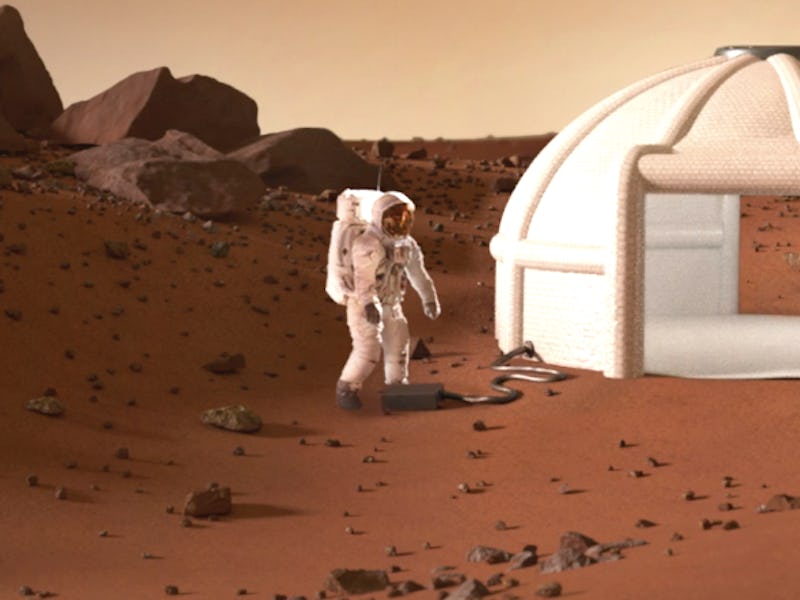The biggest challenge to making life on Mars possible isn’t really developing the technology for human habitation, but making those habitats affordable and sustainable. If engineers at SpaceX, NASA, and other parties can’t come up with a design for a cheap Martian house, it’s going to be extremely difficult for humans to build and maintain a colony on the red planet. So here comes former Star Trek: The Next Generation and Star Trek: Deep Space Nine writer Morgan Gendel, with an innovative solution.
On September 3, as part of the Escape Velocity science and pop culture convention in Washington D.C., Gendel presented his innovative concept for what he is now calling the “Habolith”. Resembling an inflatable igloo in space, Gendel believes the Habolith is the best bet for living on Mars on a budget. Going cheap, in this case, means low-mass and low-volume during the trip out of Earth’s gravity, where costs are estimated at $100,000 per kg of payload mass. As pointed out by Outerplaces, building structures on other planets is extremely difficult because “all that building material has to come from somewhere, along with the tools and equipment to build it.” Material weight is a big obstacle, leading many to believe that one solution around shipping so much stuff to Mars would lie in 3D-printing houses after the fact. But, because 3D printers are so bulky, Gendel felt there was an easier, two-step solution.
First, erect an inflatable habitat with Martian air, using struts that are totally hollow. “But then astronauts will pump soil-jam made regolith into concrete hardness. This way, you don’t need to make extra water or bring gypsum from Earth to make concrete,” Gendel tells Inverse excitedly. “The beauty of this is, except for the inflatable bag that becomes Habolith, this is all made from Martian resources. The Martian soil pumped throughout Habolith also provides much-needed radiation-shielding.”
Regolith is essentially bedrock and other soil material found on the surface of a planet. So, what begins as a temporary blow-up Martian home is actually just a frame for a more permanent structure, one built from Mars dust itself.
Captain Picard goes full on survivalist in Morgan Gendel's "Starship Mine."
As a longtime fan and purveyor of sci-fi, Gendel explains that he came up with his idea for the Habolith while writing his sci-fi novel-in-progress called Planet Zero. But, he’s also quick to note that science-fiction didn’t completely create an opportunity here. Instead, he thinks the reason he was successful at writing for Star Trek in the ‘90s because he always put the science before the fiction.
“I was good at pitching Star Trek because of my scientific leanings. For “Inner Light,” “Starship Mine,” and “Armageddon Game,” I came in with the tech idea that drove the story. In each case, it was scientifically plausible,” he says.
The inflated Habolith
Gendel’s partner on Habolith is engineer Mason Peck of Cornell University. At present, Gendel has a patent pending for the design and he and Pack have applied for a NASA grant to get funding for the project, though they’re not ruling out interest from companies like SpaceX or Blue Origin, should those parties come knocking on the Habolith door. Gendel is also confident in the easy way the Habolith could be tested terrestrially.
“Once I’ve proven the concept, I may want to bring this to FEMA or a company that could produce this for emergency or refugee housing,” he says. “The coolest thing about Habolith is that it is so simple and low-tech and efficient. You can drop these out of a C130, parachute them all across Harris County and self-inflate, and voila: instant emergency housing.”
